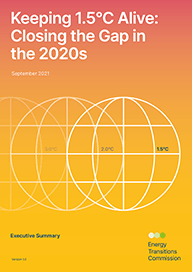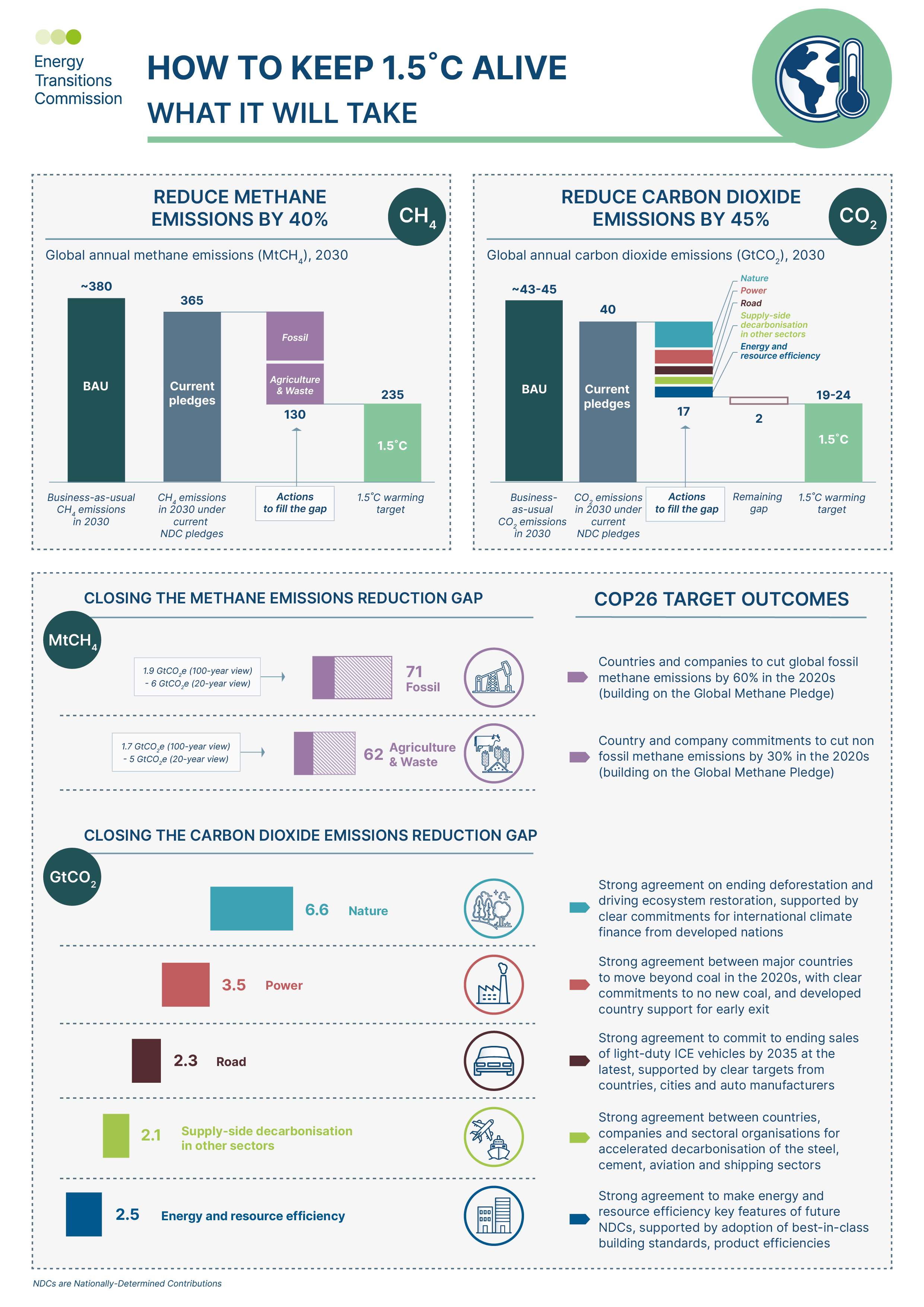Keeping 1.5°C Alive: Actions for the 2020s
September 2021
The latest report by the Energy Transitions Commission (ETC), Keeping 1.5°C Alive: Closing the Gap in the 2020s, sets out the key actions necessary in the 2020s to deliver the Paris agreement and limit global warming to 1.5°C.
Current national decarbonisation pledges (Nationally Determined Contributions, or NDCs), made as part of the Paris Agreement, fall far short of keeping the planet’s average temperature rise within 1.5°C. An additional 17-20 Gt of CO2 reductions and a 40% reduction in methane emissions would be needed to achieve that objective. The ETC’s report describes technologically feasible actions which could close that gap to a 1.5°C pathway.
The report focuses on actions which are clearly technically feasible and entail minimal cost. All of the actions identified could initially be progressed via commitments from leading countries and companies, without the need for comprehensive international agreement. But two high priority actions – ending deforestation and reducing emissions from existing coal plants – will need to be supported by climate finance flows from rich developed countries.
The measures identified by the ETC include:
- Significant and rapid reductions in methane emissions. Low-cost actions could cut fossil fuel related emissions by 60% by 2030, while emissions arising from agriculture and waste management could be cut by 30%.
- Halting deforestation and beginning reforestation. Halting deforestation, beginning reforestation and improving other land use practices could reduce emissions by 6.5Gt per year by 2030. Achieving this will require financial support from rich developed countries and should be a priority use of committed climate finance.
- Decarbonising the power sector and accelerating the phaseout of coal. An immediate ban on the construction of new coal-fired power plants, combined with a phaseout of existing coal plants, could deliver 3.5 Gt of additional emissions reductions by 2030. Rich developed countries should commit to total phase out by 2030, and climate finance flows from developed economies should support a gradual phase out in developing countries.
- Accelerating the electrification of road transport. A ban on selling internal combustion engine light duty vehicles, instituted by 2035, would cement the already started shift to electric vehicles. Commitments by major fleet operators to fully electrify their vehicle fleets at still earlier dates would be a powerful driver of change. An additional 2.3 Gt per year of emission reductions could result from such actions by 2030.
- Accelerating supply decarbonization in buildings, heavy industry, and heavy transport. Sufficiently reducing emissions from these sectors will extend beyond 2030. However, advances in electrification, low-carbon hydrogen, and carbon-capture and storage is already driving this effort. Industry agreements, such as to trade only in low-carbon goods, can be established at COP26 and thereby accelerate this transition.
- Reinvigorating energy and resource efficiency. Though progress in these areas has slowed, replicating best-in-class standards for efficient homes and appliances can be accelerated through a combination of existing and new initiatives at COP26 would revive these vital measures.












